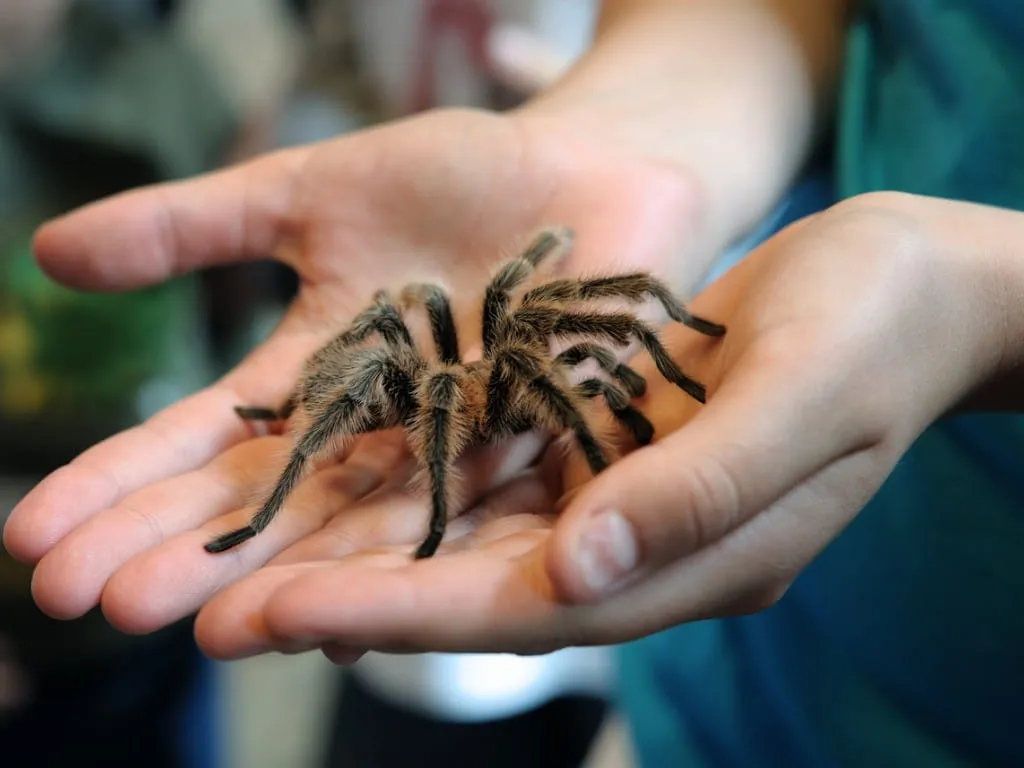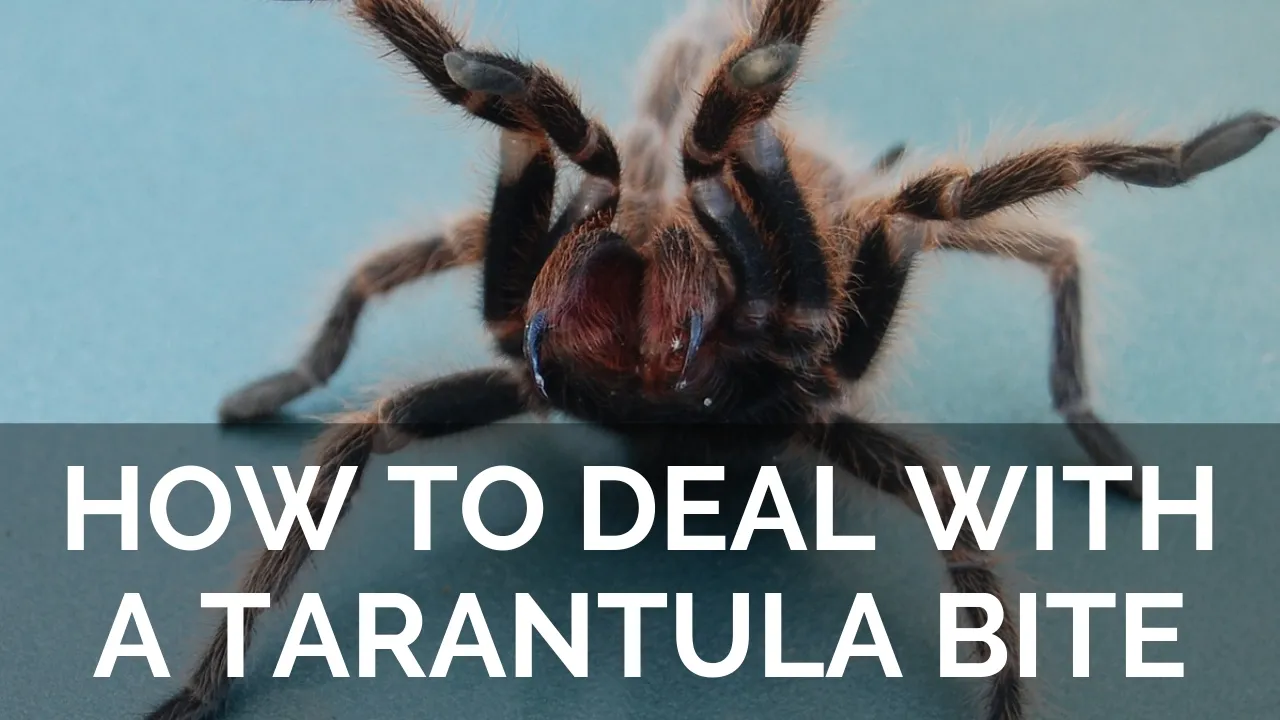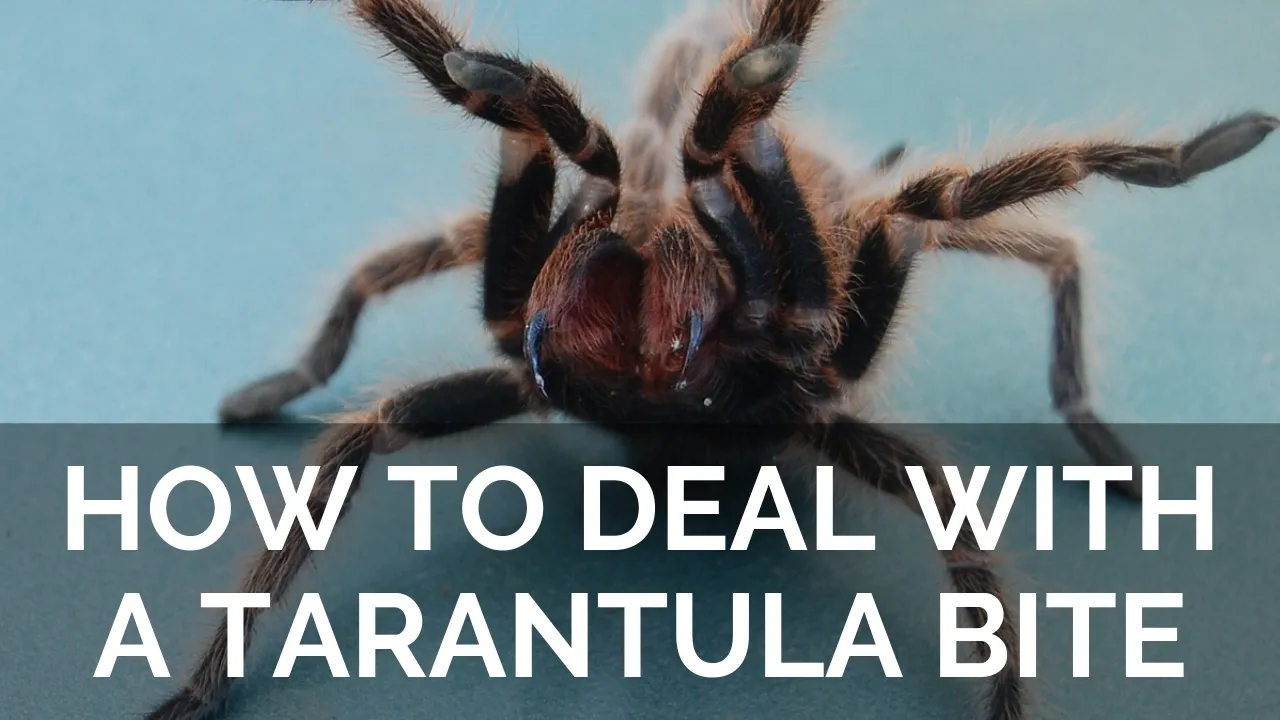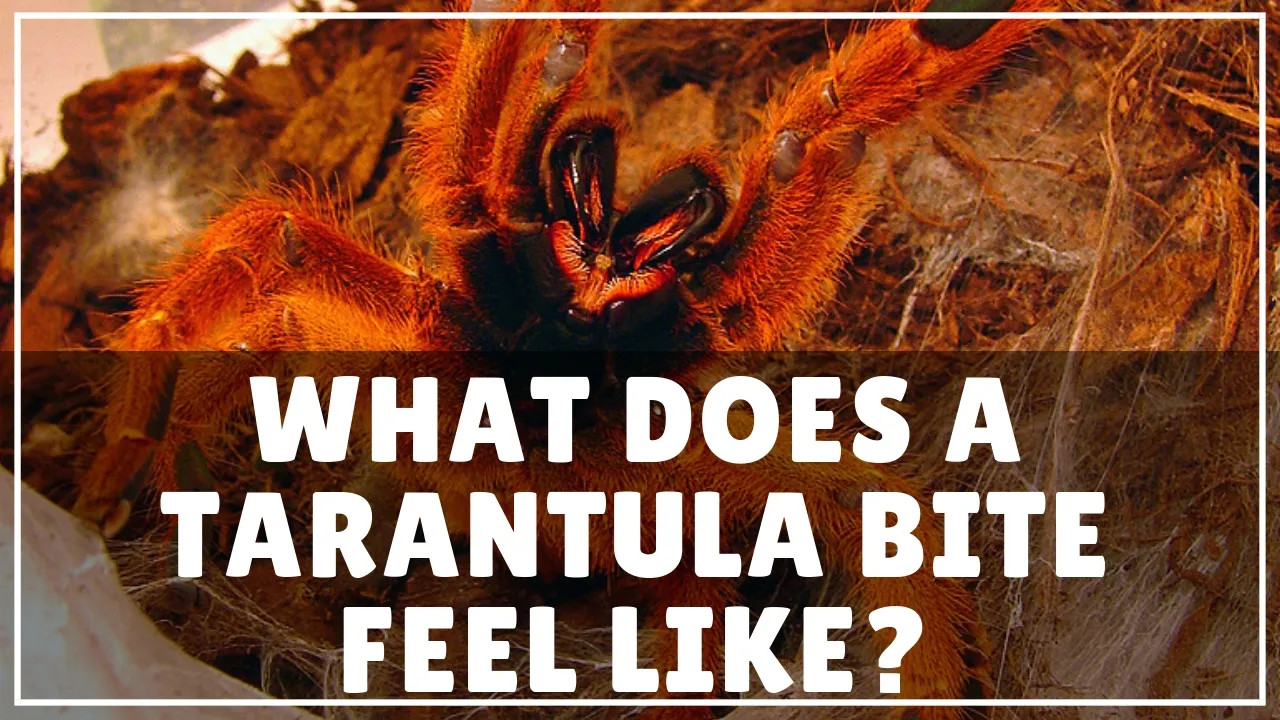The Tarantula Bite: An Overview
Tarantulas, despite their intimidating size and appearance, are not typically deadly to humans. However, their bites can be painful and cause a range of symptoms, from localized discomfort to more systemic reactions. The severity of a tarantula bite depends on several factors, including the species of the tarantula, the amount of venom injected, and the individual’s sensitivity to the venom. While most tarantula bites are not life-threatening, they can still be a significant health concern, especially for those with allergies or underlying health conditions. Understanding the nature of tarantula bites is crucial for anyone who may encounter these arachnids, whether in the wild or as a pet.
Symptoms of a Tarantula Bite
The symptoms of a tarantula bite can vary widely, but generally fall into two categories local reactions and systemic symptoms. The local reactions are typically the most common and often the least severe, while systemic symptoms, although less frequent, can be more concerning. It is important to be able to recognize these symptoms, because early identification and treatment can help minimize discomfort and prevent more serious complications. Being able to differentiate between the two types of symptoms can assist in determining the appropriate course of action following a bite.
Local Reactions and Pain

Local reactions at the bite site are the most common and immediate responses to a tarantula bite. These reactions often include immediate pain, which can range from a mild sting to a sharp, intense ache. The area around the bite may become red, swollen, and tender to the touch. Itching and warmth at the site are also common. In some cases, there may be a small amount of bleeding or the appearance of fang marks. While these local reactions can be uncomfortable, they usually subside within a few hours to a couple of days. Applying a cold compress and taking over-the-counter pain relievers can often help manage the symptoms.
Systemic Symptoms
Systemic symptoms, those that affect the entire body, are less common but can be more serious. They typically indicate a stronger reaction to the venom. These symptoms might include muscle cramps, nausea, vomiting, or dizziness. In rare instances, a bite could cause more severe reactions such as difficulty breathing, rapid heartbeat, or allergic reactions. Anyone experiencing systemic symptoms after a tarantula bite should seek immediate medical attention, because prompt treatment can be essential to prevent complications. It is important to keep a close eye on the person who has been bitten and monitor for any signs of a systemic response.
Top 5 Tarantulas with the Worst Bites
Identifying which tarantulas have the worst bites involves considering factors like the potency of their venom, the size of their fangs, and the overall aggressiveness of the species. While all tarantulas possess venom, the severity of the bite can differ dramatically. It’s also important to note that individual reactions can vary, so one person’s experience might be different from another’s. The following list highlights five tarantula species known for having bites that can cause significant discomfort or reaction.
The Goliath Birdeater

The Goliath Birdeater (Theraphosa blondi) is the largest tarantula in the world. It is a very large and hefty spider, it also has large fangs, and their bite can be incredibly painful. However, the Goliath Birdeater is more likely to flick urticating hairs as a defense mechanism. The potency of the venom itself is not considered highly dangerous, but the size of the fangs and the mechanics of the bite can inflict a deep wound, leading to significant pain and discomfort. Additionally, the spider’s defensive behaviors can make handling them hazardous, increasing the risk of a bite.
Characteristics and Bite Potency
The Goliath Birdeater is known for its enormous size, reaching up to 12 inches in leg span. Their fangs can be quite long, capable of inflicting a deep puncture wound. The venom, while not highly toxic, contains enzymes and compounds that can cause significant local pain, swelling, and potential muscle cramps. The sheer size of the spider and the depth of the bite contribute to the overall intensity of the experience. The Goliath Birdeater’s bite is often described as intensely painful, and the bite can last for an extended amount of time. The spider’s hairs, while not directly related to the bite, also cause intense irritation.
The Brazilian Wandering Spider
The Brazilian Wandering Spider (Phoneutria genus) is not a tarantula but is often compared to them, and it is known for its highly potent venom. This spider, which is among the most venomous spiders in the world, is aggressive and prone to biting when threatened. Their venom contains a complex mixture of toxins that can cause severe pain, muscle spasms, and other systemic symptoms, including cardiovascular effects. It is responsible for a significant number of human envenomations, particularly in its native habitat. Due to its high toxicity and aggressive nature, a bite from a Brazilian Wandering Spider is a serious medical emergency.
Characteristics and Bite Potency

The Brazilian Wandering Spider is characterized by its aggressive defensive stance and its fast movement. Their venom is a complex mix of toxins, the bite can cause intense pain, sweating, increased heart rate, and high blood pressure. The venom can also cause priapism, a painful and prolonged erection in males. The severity of a bite from this spider necessitates immediate medical attention and antivenom administration. The combination of venom toxicity and aggressive behavior make this one of the most dangerous spiders to encounter.
The Tiger Rump Tarantula
The Tiger Rump Tarantula (Psalmopoeus irminia) is known for its defensive posture and potential bite. This tarantula, though not as large as some other species, can be quite defensive and prone to biting when disturbed. The venom is not considered to be highly toxic, but the bite can still cause significant pain, swelling, and other local reactions. Additionally, the urticating hairs on the abdomen can cause severe irritation if they come into contact with the skin or eyes. This combination of factors can make an encounter with a Tiger Rump Tarantula unpleasant.
Characteristics and Bite Potency
The Tiger Rump is a relatively small tarantula, known for its distinctive striped pattern. The bite is not usually life-threatening, but the venom can cause moderate pain, redness, and swelling at the bite site. These tarantulas also have urticating hairs that they flick when threatened, which can cause intense itching and irritation. This species tends to be more defensive and can strike quickly, making them a potential threat, particularly for inexperienced handlers or those who disturb them.
The Cobalt Blue Tarantula

The Cobalt Blue Tarantula (Cyriopagopus lividus) is another species that is known for its potent venom. Though they are visually striking, with their vibrant blue coloration, they can be quite aggressive and can deliver a painful bite. Their venom is more potent than that of many other tarantulas, and the bite can result in intense pain, muscle cramps, and other systemic effects. The Cobalt Blue Tarantula is also known for being very fast and defensive, which can make them dangerous, especially in situations where they feel threatened.
Characteristics and Bite Potency
Cobalt Blue Tarantulas are known for their vibrant metallic blue coloration. Their venom is more potent compared to several other tarantulas, producing significant pain and muscle cramps. They also have a very fast and skittish nature, which can make them more prone to biting if they feel threatened. While their bite isn’t typically fatal, the venom is powerful enough to produce intense discomfort, and their temperament makes them a challenging species to handle safely. The combination of a more potent venom and a quick, nervous nature makes them a higher risk for bites.
The Mexican Red Knee Tarantula
The Mexican Red Knee Tarantula (Brachypelma hamorii) is a popular species among tarantula enthusiasts due to its docile nature and striking appearance. However, they still possess venom and can bite if provoked. While their venom isn’t as potent as some other species, their bite can still be painful, and the bite can cause localized reactions such as swelling, redness, and itching. The main defense mechanism of this spider is their urticating hairs, which can cause extreme irritation upon contact, so while the bite itself isn’t the worst, the overall experience can still be unpleasant.
Characteristics and Bite Potency

The Mexican Red Knee Tarantula is known for its distinctive red and black markings, it is generally considered a docile species. Their venom has a lower potency compared to some other tarantulas, and bites typically result in local pain, some swelling, and itching. Their primary defense mechanism is their urticating hairs, which they flick off their abdomen when threatened. The venom itself doesn’t pose a significant health risk, however, their defensive behaviors can cause discomfort and irritation.
First Aid and Treatment for Tarantula Bites
Immediate and appropriate first aid is crucial after a tarantula bite to reduce discomfort and prevent complications. First, remain calm and move away from the spider to avoid further bites. Clean the bite site thoroughly with soap and water to reduce the risk of infection. Apply a cold compress or ice pack to the area to reduce pain, swelling, and inflammation. If the bite is from a species known to have a more potent venom or if the person is experiencing any systemic symptoms, seek medical attention immediately. Providing as much information as possible about the spider, if it can be identified, will aid in the treatment process. The steps can significantly influence the outcome of a tarantula bite, minimizing its effects and promoting faster healing.
Immediate Actions
Immediately after a tarantula bite, stay calm and move away from the spider to prevent any further bites. Clean the bite area gently but thoroughly with soap and water to minimize the risk of infection. Apply a cold compress or ice pack wrapped in a cloth to the site. This helps reduce swelling and pain. If the affected person has any known allergies or starts to exhibit systemic symptoms like difficulty breathing, seek immediate medical attention. Being prompt with these actions will assist in managing discomfort and potential complications, supporting a better recovery.
Medical Treatment

Medical treatment for a tarantula bite varies depending on the severity of the symptoms. For minor bites, over-the-counter pain relievers and antihistamines may be recommended to manage pain and itching. If there are signs of an allergic reaction or systemic symptoms, the individual may need to be treated with antihistamines, corticosteroids, or epinephrine. In severe cases, hospitalization may be necessary for observation and supportive care, including intravenous fluids and pain management. There is no antivenom specifically for tarantula bites, so treatment focuses on managing the symptoms and preventing complications. Seeking medical advice is always recommended, particularly if the person is bitten by a tarantula known for having a more potent venom.
Preventing Tarantula Bites
Preventing tarantula bites involves taking several precautions, especially if you live in an area where tarantulas are common or if you handle these spiders as pets. Wear protective gloves and long sleeves when handling tarantulas or working in areas where they might be present. Avoid putting your hands and feet into crevices or under rocks where tarantulas could be hiding. If you keep tarantulas as pets, ensure their enclosures are secure and well-maintained to prevent escapes. Educating yourself about the different species and their behaviors can also help you recognize potential risks and avoid situations that could lead to a bite. Being vigilant and taking these steps can significantly reduce the chances of encountering a tarantula bite.
